Located at the edge of Diyawanna Lake, in close proximity to the Sri Lankan Parliament, the marshlands of Beddagana Wetland Park are an enchanting natural landscape and a bird sanctuary that also happens to be an underrated public park.
Spanning over 18 hectares of land space, this wetland park attracts many locals – in particular – families interested in exploring the biodiversity of flora and fauna of the park.
It’s also a popular stopover for couples looking for an evening of recreation.
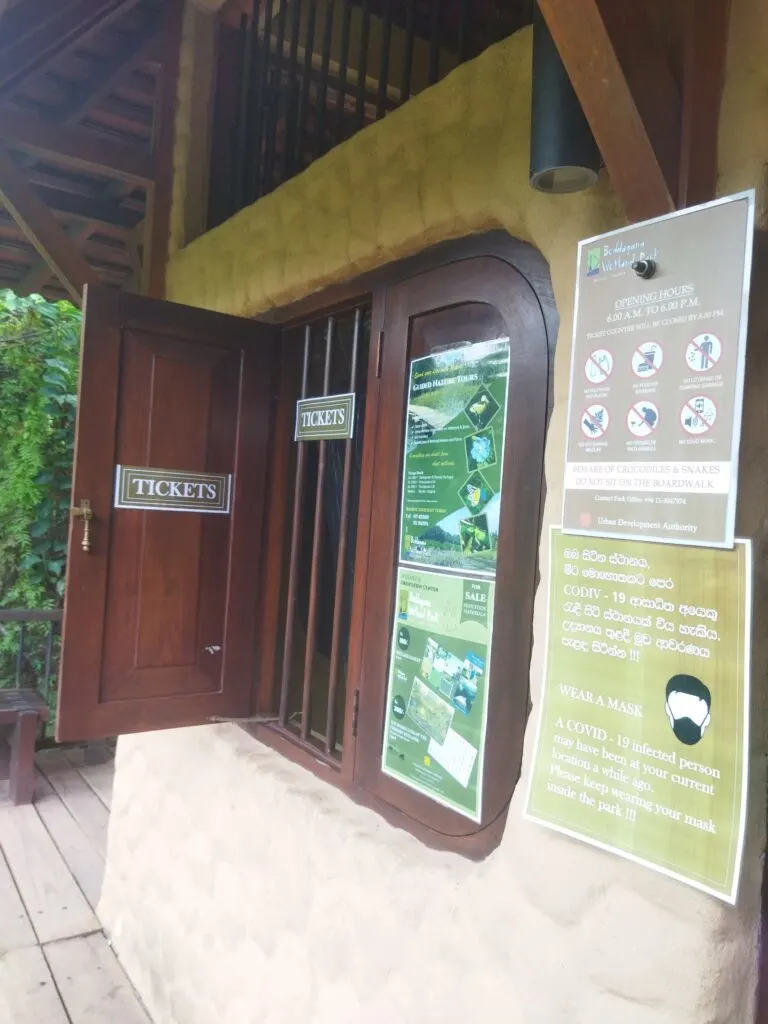
| Timings | 6:30 AM – 5:00 PM |
| Entrance (Foreign Children) | LKR 500* |
| Entrance (Foreign Adults) | LKR 1000* |
| Entrance (Local Children) | LKR 50* |
| Entrance (Local Adults) | LKR 100* |
| Location/Address | Google Maps |
| Contact Number | +94113047974 |
*Prices as of May 2022

How To Get To Beddagana Wetland Park
Beddagana Wetland Park borders the charming Diyawanna Lake in the Sri Lankan capital city, Sri Jayawardenepura Kotte.
The Wetland Park area may look quite interior, but it’s located in the middle of the urban suburbs and can be reached within 30 minutes from Colombo if you’re using a private vehicle or a taxi.
As no direct bus routes pass by the wetland park, you may have to hail a taxi depending on how closest the bus gets by.
If you use a ride-hailing app, it wouldn’t cost you more than Rs. 800 to get to Beddagana wetland from Colombo.
Learn More about places to visit in Sri Lanka
Things To Do At Beddagana Wetland Park
Beddagana Wetland Park is home to a variety of animal species, including over 50 species of exotic migratory birds, 119 species of butterflies, dragonflies and mammals to its flourishing swampland.
Some of the migratory bird species are only native to Asian wetland parks. Avid bird-watching enthusiasts could find themselves in a mini urban paradise here in Beddagana wetland. Make sure to head to the bird-watching tower for phenomenal angles.
If you’re in Colombo during the weekend and you want a brief getaway out of town, the Beddagana Wetland area is the ideal place. Here you could catch scenic nature at its purest and immerse yourself in tranquillity.
When you enter the park complex, you will come across a wooden walking path that extends over the swamps, which makes moving around the area much more convenient whilst giving you a panoramic view of the Beddagana Wetland.
You can worry less about getting your feet muddy during the escapades and enjoy your wildlife tour. If you’re looking to get some captures for Instagram, you can head over during early dawn or dusk for the most spectacular views.
Take a good camera not just for the portraits, but to zoom in on those exotic birds you may never have seen.
Best Time To Visit The Park
You can visit the park from Monday to Sunday from 6.30 am to 5.00 pm. The park is a delight, regardless of time or day, but visit in the morning for the best chance to see wildlife.
Also, if you want to spot migratory birds, choose the period from August to April.
Video Of Beddagana Wetland Park
The Layout of Beddagana Wetland Park
The park borders Diyawanna Oya. You can find two trails coupled with several zones here; each zone is marked with a name board.
The park is also equipped with a spacious parking area, and the ticket counter is at the main entrance.
Lakeside Trail – Trail 1
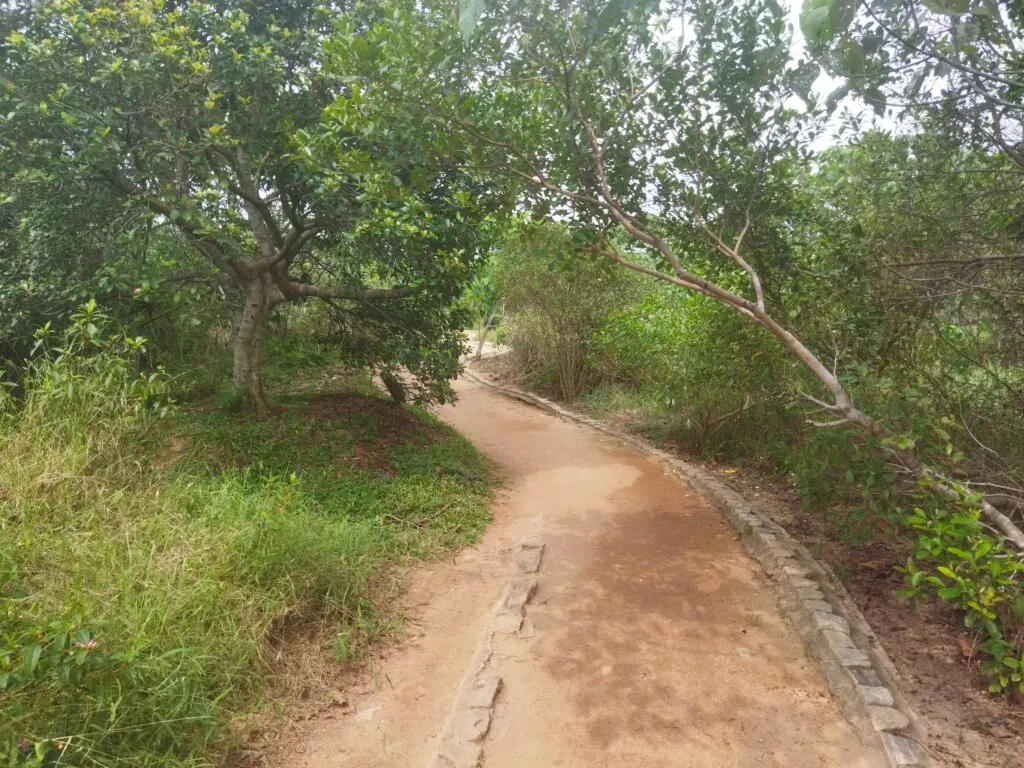
The trail runs alongside the lake through a lush forest patch with mangrove tunnels and vines, and at the end of the trail is a floating deck: an excellent vantage point that affords beautiful views of the lake.
If you decide to take this trail, you’ll come across two zones: the Duck Pond and the Butterfly Walk.
Butterfly Walk
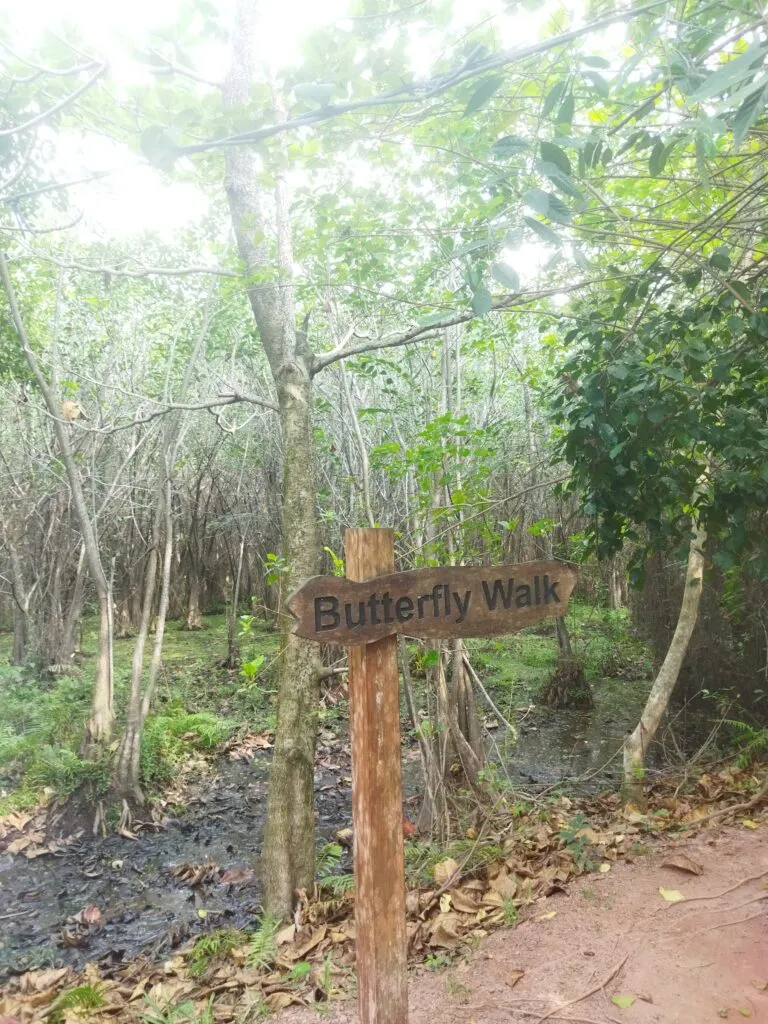
This area of the park is loved by butterflies; you will see a number of flower species along with numerous butterfly breeds endemic to Sri Lanka.
Be prepared to spend a bit of time here and be a little patient if you want to see the butterflies.
Duck Pond
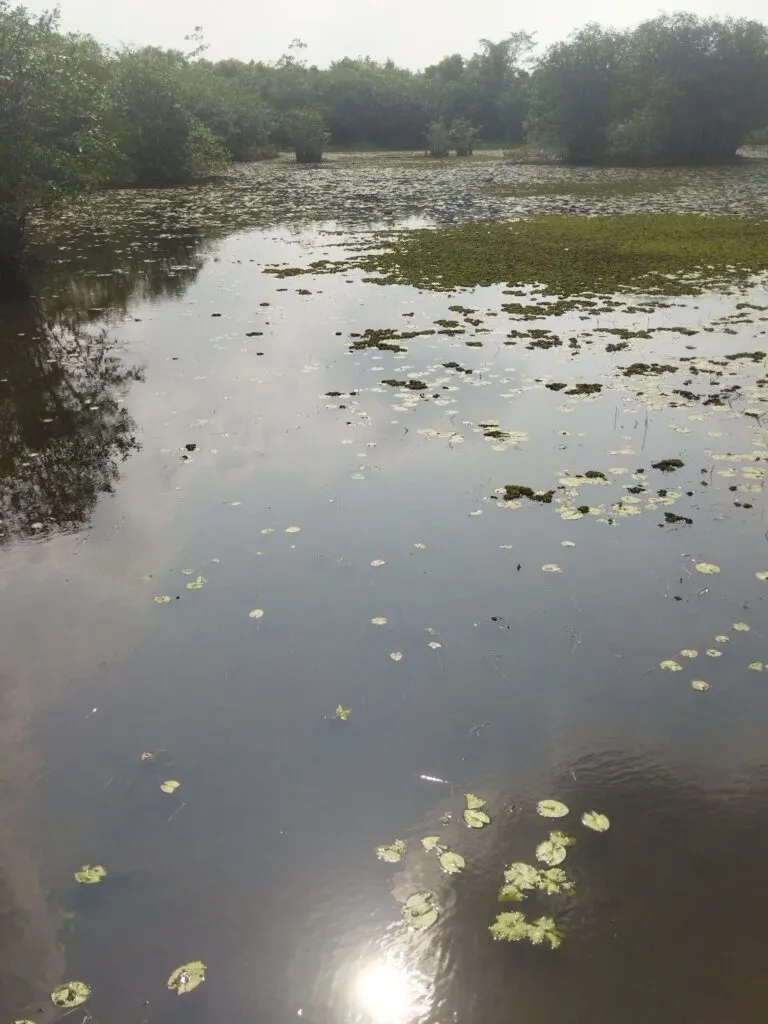
After a few minutes along Trail 1, you will come across the Duck Pond. As the name suggests, ducks are the main attraction here, but you will see numerous other wild species too.
You can stroll around the pond, and when you do, you’ll find an observation tower; you can do some birdwatching from the tower without disturbing the wildlife.
Diyawanna Walk and Floating Deck
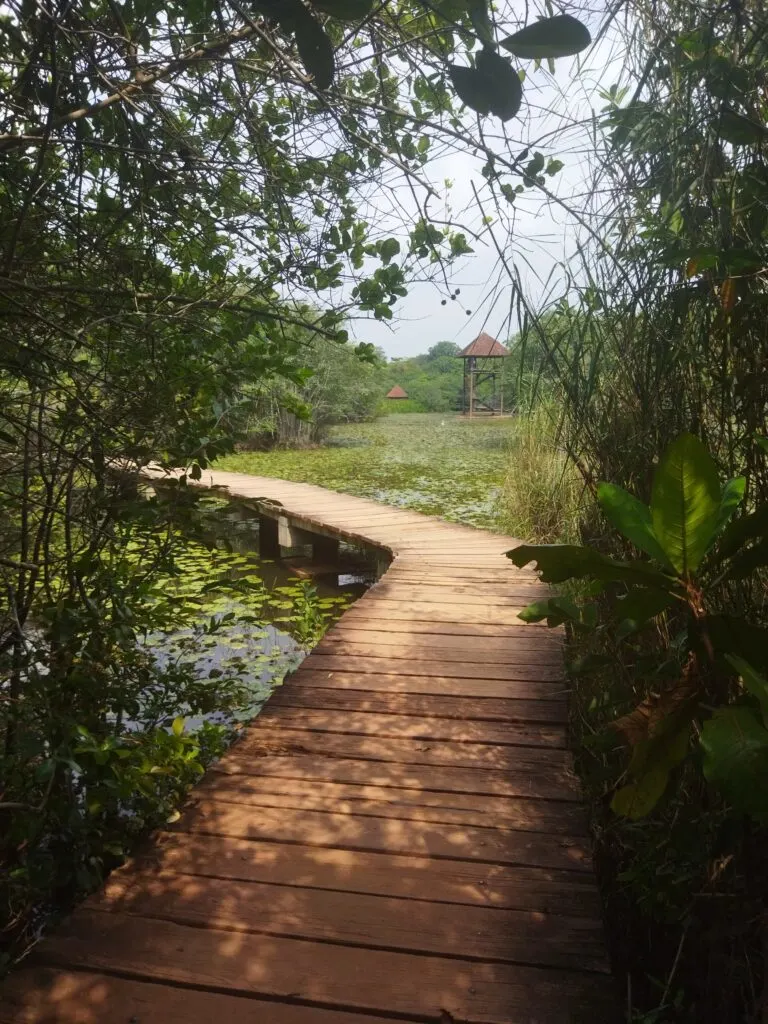
If you continue on Trail 1 after the Duck Pond, you will find a hut with seating where you can rest your legs.
Further along, you will find the lake and a boardwalk annexed to the bank; this area is called Diyawanna Walk. There’s also a wooden deck over the water.
The section of the trail that passes through the forest area is called the Forest Trail. You can spot numerous endemic and migratory birds and also several wildlife species like water monitors and fishing cats.
At the end of this scenic pathway is the floating deck. The deck seems to float over water and is popular for nature photography.
Migratory Birds Trail – Trail 2
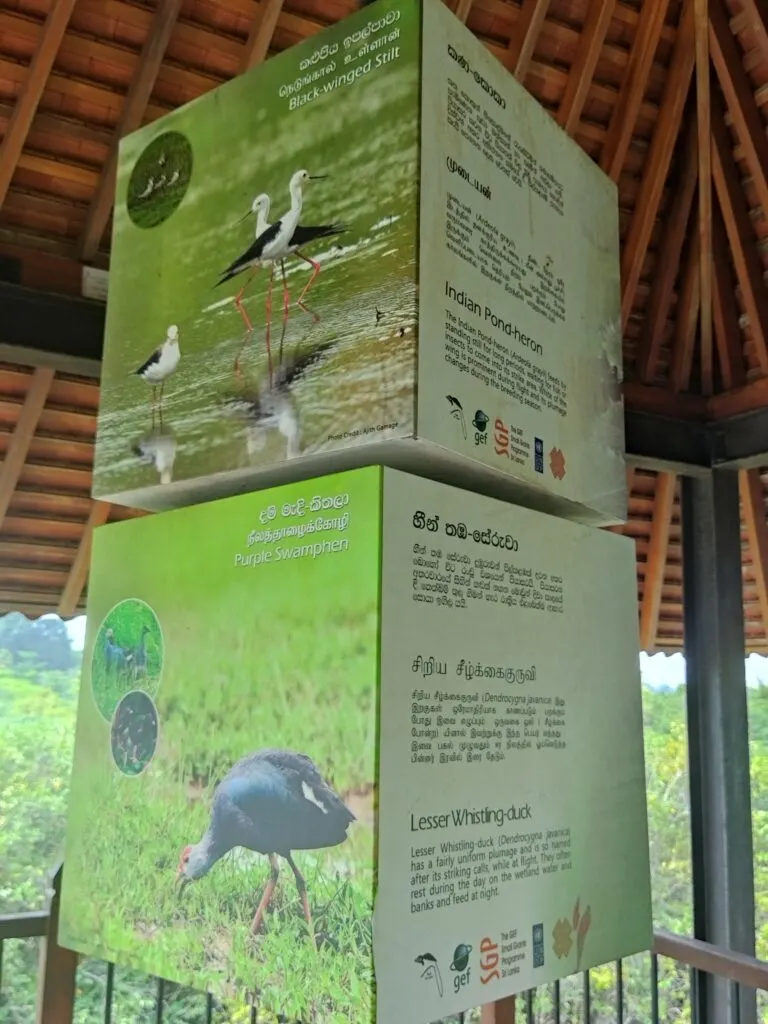
Trail 2 begins at the park entrance and ends at the parking lot.
If you decide to explore this trail, you’ll first encounter the educational centre of the park – visitors can learn a lot here about conservation, the biodiversity of the park, and wetland management.
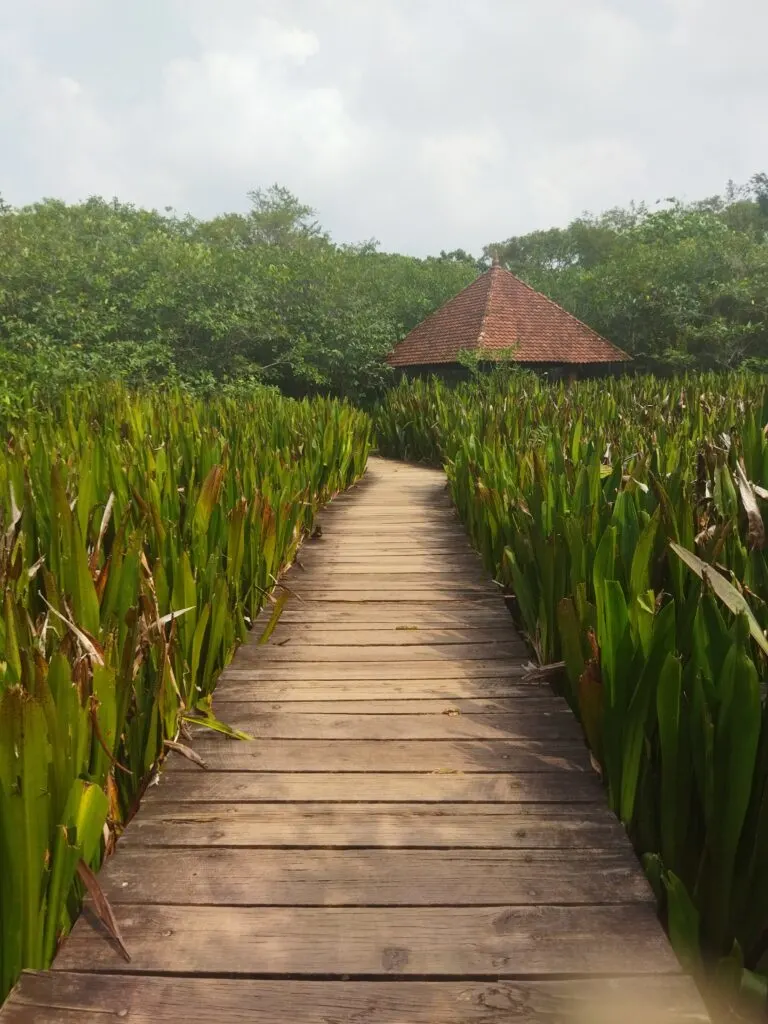
The Bird Trail passes through a section endowed with a marshland, a water reservoir, and numerous tree species. Visitors must stay on the trail and cannot wander around as the ground is a bird nesting area.
You’ll also see some of the nests made with pebbles and rocks, the courtesy of the park management, where migratory birds lay eggs.
On a different note, don’t forget to slather your skin with mosquito repellent as the park is beloved by mosquitos too!
History of Beddagana Wetland Park
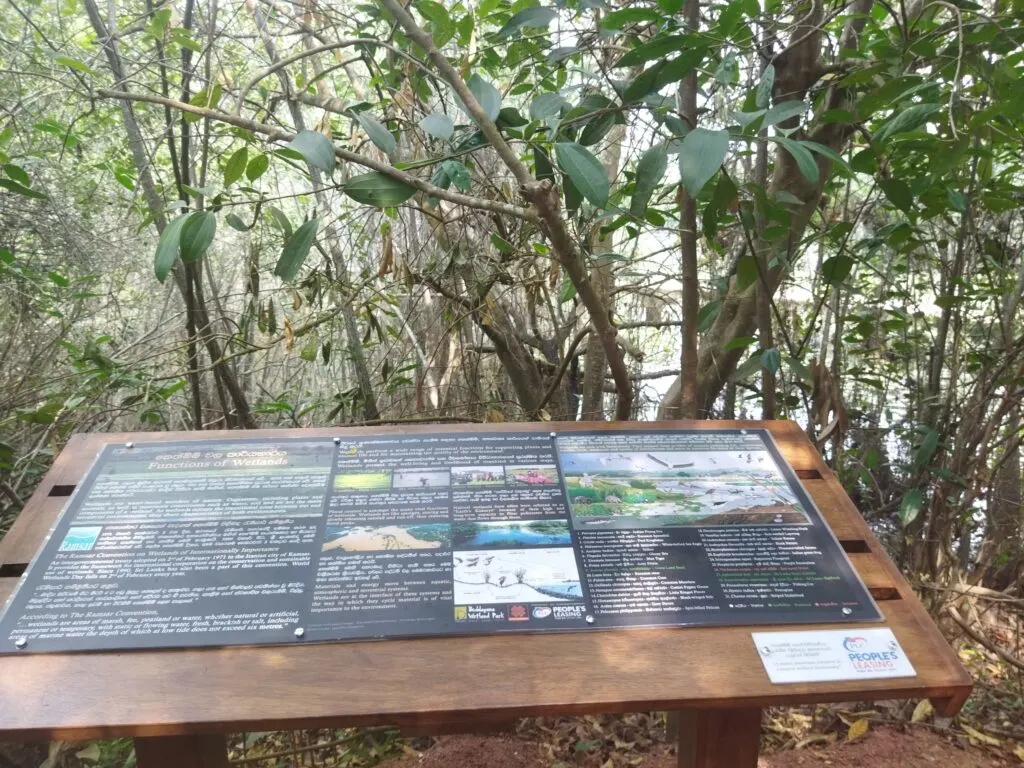
Beddegana Wetland Park is quite the new addition to the list of Colombo attractions. The park encircles Diyawanna Oya Lake, which forms part of the Diyawanna Oya flood plains.
While the park is a recreational facility, it also helps to control the floods in the area by absorbing and detaining flood water. Over centuries, the marshland became populated with mangroves and wetland plants, making it a location of rich biodiversity.
The land attracts birds from around the world; these birds pollinate and bring new flower seeds with them, which has given rise to a diverse array of flower species in the park; the park has, in turn, become a sanctuary for butterflies.
The park was opened to the public in 2016. The Sri Lankan Department of Wildlife Conservation declared the region a protected wildlife sanctuary in 1985.
And in 2013, the Metro Colombo Urban Development Project redesignated the park as a recreational centre for people who want to enjoy nature and see wildlife.
Today, the park is visited by locals as well as foreign tourists who want to see birds and butterflies.
What Not To Do At The Park
The park is a pristine slice of nature that’s brimming with wildlife, and visitors are partly responsible for the upkeep of the park.
You are not allowed to bring plastic containers or water bottles into the park; there’s a designated area outside the ticket counter where you can leave them.
Also, make sure you don’t leave any food wrappings. Furthermore, if you decide to bring your cameras, keep the flash off as it may disturb the wildlife.
Enjoyed the article? You might also be interested in Diyasaru Park | Diyatha Uyana

